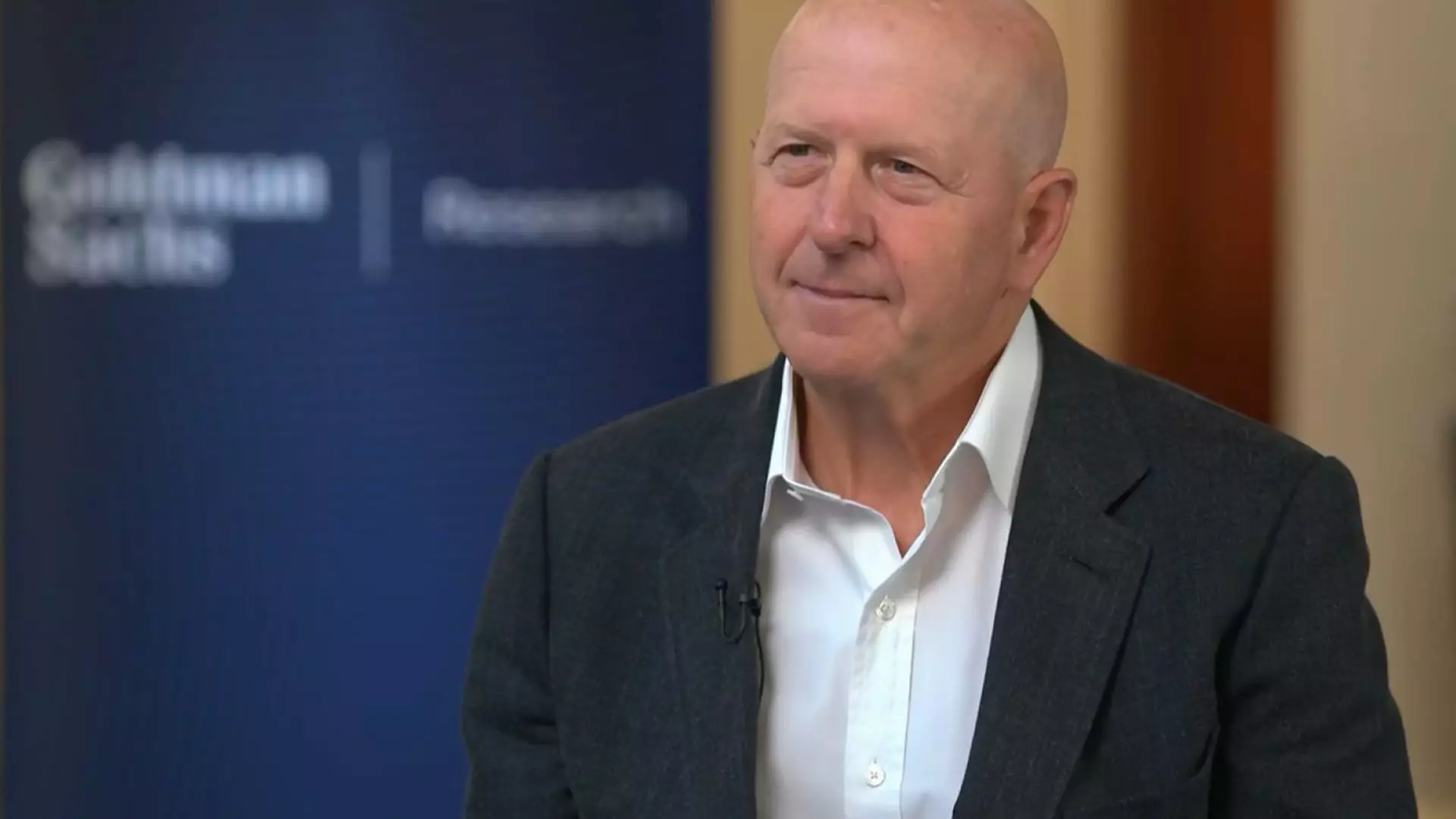Goldman Sachs recently released its first-quarter financial results, which, at a superficial glance, appear to be a beacon of hope in a murky economic landscape. The reported earnings of $14.12 per share exceeded analysts’ expectations, equating to a vibrant 15% year-on-year profit increase of $4.74 billion. This surge is attributed largely to their equities trading revenue, which considerably outperformed prior projections, culminating in a 27% rise that brought in $4.19 billion. However, while these numbers can be interpreted as success stories, we must tread carefully in analyzing their implications for the broader economy, given the current volatility catalyzed by looming geopolitical tensions.
The Double-Edged Sword of Equities Trading
The impressive uptick in trading revenue should be accompanied by a critical examination of what fuelled these gains. Much of this “success” arises from elevated market volatility, an effect directly linked to political instability under former President Donald Trump. Rising tensions in trade negotiations have led to erratic shifts in the market; thus, while Goldman enjoys a temporary windfall, we must ask: at what cost? The extraordinary performance in equities trading, now such a significant part of Goldman’s revenue, raises questions about the stability of financial success driven by precarious circumstances.
The global banking sector is undergoing significant transformations, and the rush to capitalize on erratic trading could herald a more significant issue of dependency on hyperactive market conditions rather than sustainable growth strategies. While it’s disheartening that fixed income revenue barely scraped a 2% increase, falling short of expectations, it underscores that not every division within Goldman is flourishing. The overshadowing performance in equities should serve both as a motivator and a clarion call about where energy needs to be directed in an increasingly uncertain financial landscape.
Investment Banking: Woes Behind the Curtains
Goldman’s investment banking arm also revealed an 8% decrease in fees, a worrying sign for a bank that thrives on advisory services. This scenario juxtaposes starkly with the broader trends within the financial industry, where fellow giants like JPMorgan Chase and Morgan Stanley showcased robust performances driven by the same volatility that seems to challenge Goldman. The missed estimates reveal more than just a blemish on Goldman’s quarterly report; they highlight a broader struggle to maintain dominance in an environment that demands agility and strategic foresight. Solving the puzzle of fluctuating advisory revenue requires acknowledging that firms must not only adapt to the trends but also cater deeply to their clients’ needs in turbulent times.
Asset Management and Wealth: A Declining Dividend
As fortunes shift in the trading arena, Goldman’s asset and wealth management division has not been as fortunate. A 3% decline in revenue juxtaposed against the previous year’s figures raises pressing concerns about how well this segment can weather ongoing market fluctuations. The firm cited significantly lower revenues from various investments, including private equity and public markets—yet another indicator that the robust trading environment may not be a sign of future resilience. The wealth management revenue could hint at broader economic woes affecting investors, challenging Goldman to rethink its methodology in a sector characterized by increasing client demands.
Navigating the Tumultuous Waters Ahead
As we step further into the second quarter, CEO David Solomon’s comments reflect both confidence and caution. The statement regarding the current operating environment being markedly different speaks volumes about the uncertainties that still loom large. The rise of protectionist policies and trade confrontations might serve to inflame volatility—a double-edged sword that Goldman’s increased trading profitability capitalizes on. Yet, the essential question is whether this success can be sustained or if the bank’s reliance on traded volatility will ultimately lead to disillusionment.
In essence, while Goldman Sachs has posted impressive numbers this quarter, it must remain aware of the precarious balance of its triumphs. The moments of growth should serve as a reminder that long-term success will require not only agility in navigating volatile markets but also a thoughtful, nurturing approach to all divisions of the bank, especially in investment and wealth management. The true test of Goldman’s resilience will depend on how effectively it can steer through inevitable storms—not merely by capitalizing on the chaos but by anticipating and mitigating the risks it presents.



Leave a Reply